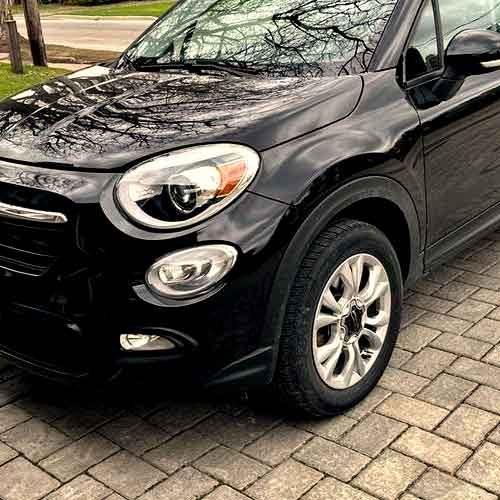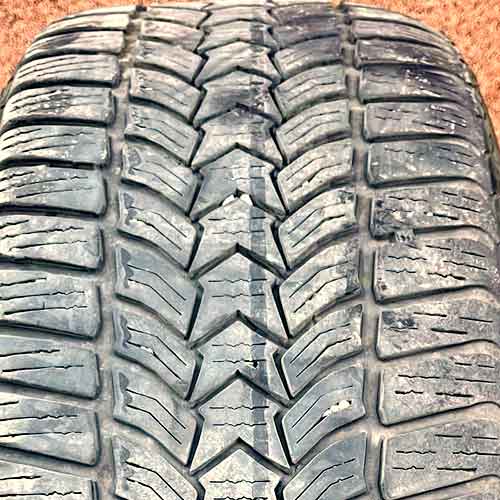The Debica Frigo HP2 vs Kormoran Snow, both exceptional winter tire offerings, each bring unique strengths to the table. As we pit these two titans against each other, let’s determine the ultimate choice for your winter drive!

Table of Contents
Key Takeaway
- Directional Grip: Debica Frigo HP2 shines with a consistent central rib, optimizing straight-line rolling. While its competitor, though featuring a central rib, falls short due to less streamlined structure.
- Dry Handling: Frigo HP2 takes the lead due to its close tread design and stiffer shoulder lugs, providing balanced steering feedback and improved handling.
- Wet Traction: Frigo HP2 outperforms with faster lap times and shorter braking distances, thanks to multi-directional siping. Though, here, Kormoran Snow performs better in hydroplaning situations with wider grooves.
- Tread Life: Debica HP2, with its firmer tread compound, resists rapid wear, unlike its peer with a softer compound and wider tread voids.
- Vibration Absorption: Kormoran Snow excels with its softer nylon cap plies and thermally adaptive tread, providing better vibration dampening, though lacks in terms of noise dampening abilities, to its counterpart.
- Snow Performance: Kormoran offers superior traction in soft snow, trapping snow particles effectively in its tread.
- Ice Performance: Frigo HP2 stands out here, with angled cuts and in-groove notches on its tread for improved grip.
- Fuel Usage: Debica HP2 proves more fuel-efficient due to its stiffer rubber.
Wet Traction
Wet traction depends on two major factors: the complexity of the siping and the flexibility of the tread.
Now both tires offer plenty of siping no doubt, the overall wet grip is still seen better on Debica Frigo.

The tire demonstrates notable improvements in wet handling, with approximately 0.5 seconds faster lap times and 5 feet shorter braking distances on average.
This can be attributed to its multi-directional siping and dual siping pattern, which enhance gripping capabilities.
However, when it comes to hydroplaning, the Kormoran Snow tire performs better due to its wider grooves, which effectively disperse water from the tread.
Hydroplaning refers to the dangerous situation where a layer of water accumulates between the tire tread and the road, resulting in reduced traction and a floating sensation.
Directional Grip
The efficiency of directional grip primarily depends on the central area of the tread, which bears the majority of the tire’s load when moving in a straight line, such as on highways.
And in this regard, the Debica Frigo HP2 outperforms its competitor by featuring almost a continuous running rib in the middle section.
Basically, this design ensures consistent contact with the ground while the tire rolls straight.
But why central rib? Well because when rolling straight, the middle area of the tread bears the most weight pressure upon itself. So how much rubber is able to meet the road form there is significant.
In contrast, the Kormoran Snow although also features longitudinal rib in its center, lacking the streamlined structure needed for optimal straight-line rolling. So you get larger braking distances with this tire.
Dry Handling
The tire’s lateral traction or handling is significantly influenced by the shoulder lugs.
Where, straight rolling (of the tire) causes central area to bear more weight, while navigating corners, the weight shifts towards the edges (shoulders), and the interaction of these lugs with the ground determines the handling performance.
So here, the upper hand is again taken by Debica, due to its closeness of the tread.
Though that only contributes to its greater performance a little, as the majority of its superior lateral traction comes from its stiffer shoulder lugs (having stronger reinforced foundations underneath).
This basically reduces flexing and bending of the lugs while cornering, resulting in a more balanced steering feedback and superior handling.
Tread Life
Winter tires typically have shorter tread life due to their softer rubber compound, which wears out more quickly.
However, the Debica Frigo HP2 defies this rule and stands as a very decent choice in the market.
So why is that?
Well, this is because of the tires innovative tread compound that is considerably firmer and less susceptible to rapid wear.
The Kormoran on the other hand, with softer compound and wider tread voids, gets to take the back seat here.
Softer compound is the obvious one, as it faces rapid burning rate.
While with wider voids, each of its lug gets to bear more weight pressure, so that wear gets escalated.
Vibration Absorption
Tires serve as auxiliary shock absorbers, cushioning the ride from road imperfections. So tires should be considered very carefully.
Now, here, the upper hand is taken by Kormoran Snow. As the tire features softer nylon cap plies internally and a more thermally adaptive tread composition externally. Together, they provide better dampening of vibrations compared to its counterpart.
The Debica Frigo on the other hand, although gets to be stable, providing better steering response, isn’t able to offer similar bumps absorption capabilities.
Noise Generation
Tire noise is an unseen enemy during a peaceful drive and is caused by two factors. First, air entering through shoulder voids hits the tread walls (and that impact causes it), and second, the impact creates in-groove resonance, which is basically echoing within the tire.
Now here, considering both, you get a superior perfomrnace on Debica. It does not allow too much air particles to enter in the first place, and then it dampens the noise further by pitch sequencing technology.
This tech, simply put, is the lug varying geometry, where air hitting generates a symphony of tonal frequencies that cancel each other out, effectively reducing noise from groove resonance.
Snow Performance
When it comes to navigating fluffy, soft snow, the Kormoran Snow stands out, with its tread design, which offers more in-groove biters that effectively trap snow particles, enhancing traction.
They basically get to hold on to (fluffy snow), better, providing ground contact with that lodged snow. This is important in this type of terrain, as snow sticks more on itself, instead of rubber.
The Debica HP2 on the other side, is missing this feature, its less aggressive tread pattern fails to catch as much snow, leading to lower snow collection efficiency.
Ice Performance
Ice poses the greatest challenge for tire grip, requiring a substantial number of biters on the tread.
The Debica Frigo HP2 excels in this regard with its thoughtful tread design, featuring angled cuts and in-groove notches that enhance grip in both lateral, and longitudinal directions.
Moreover, its more aggressive siping pattern also contributes to shorter braking distances, as showed by the tests we carried.
The Kormoran’s tire on the other hand, does not carry as many biters per square inch (if you will). So gripping on ice is limited a bit.
Fuel Usage
Fuel economy is influenced by a tire’s rolling resistance, which reflects the tread’s grip on the road.
But what causes that resistance, well weight, and lug bending.
Now both tires weigh almost equal on average (considering all sizes). So the main difference comes from the other factor.
And considering that it makes sense why the Debica Frigo HP2 gets to be better with it’s stiffer rubber, not molding a lot, and saving up fuel energy.
The Kormoran Snow on the other side, gets to produce greater bending of the lugs, which leads to greater heat generation and overall energy consumption, resulting in a less fuel-efficient tire.
Summary
So let me get straight to the point.
The Debica Frigo HP2 tire outperforms its competitor in several areas.
It has better directional grip on highways and provides consistent contact with the ground while rolling straight. And it offers superior dry handling, wet traction, as well as, fuel efficiency.
Moreover, the tire also gets to have superior tread life, and is quieter on roads, in comparison.
However, the Kormoran Snow performs better in hydroplaning situations and has enhanced snow traction. And gets to be better when it comes to overall impact comfort performance.